Abstract
A value-like parameter is introduced into a rate equation for describing variable-interval performance. The equation, derived solely from formal considerations, expresses rate of responding as a joint function of rate of reinforcement and “reinforcer power.” Preliminary tests of the rate equation show that it handles univariate data as well as Herrnstein's hyperbola. In addition, a form of Herrnstein's hyperbola can be derived from the equation, and it predicts forms of matching in concurrent situations. For the multivariate case, reinforcer values scaled in concurrent situations where matching is assumed to hold are taken as determinations of reinforcer power. The multivariate rate equation is fitted to an appropriate set of data and found to provide a good description of variable-interval performance when both rate and power of reinforcement are varied. Rate and power measures completely describe reinforcement. The effects of their joint variation are not predicted and cannot be described by Herrnstein's equation.
Keywords: value, mathematics, variable-interval schedules, linear systems, reinforcement rate, response rate, matching, law of effect
Full text
PDF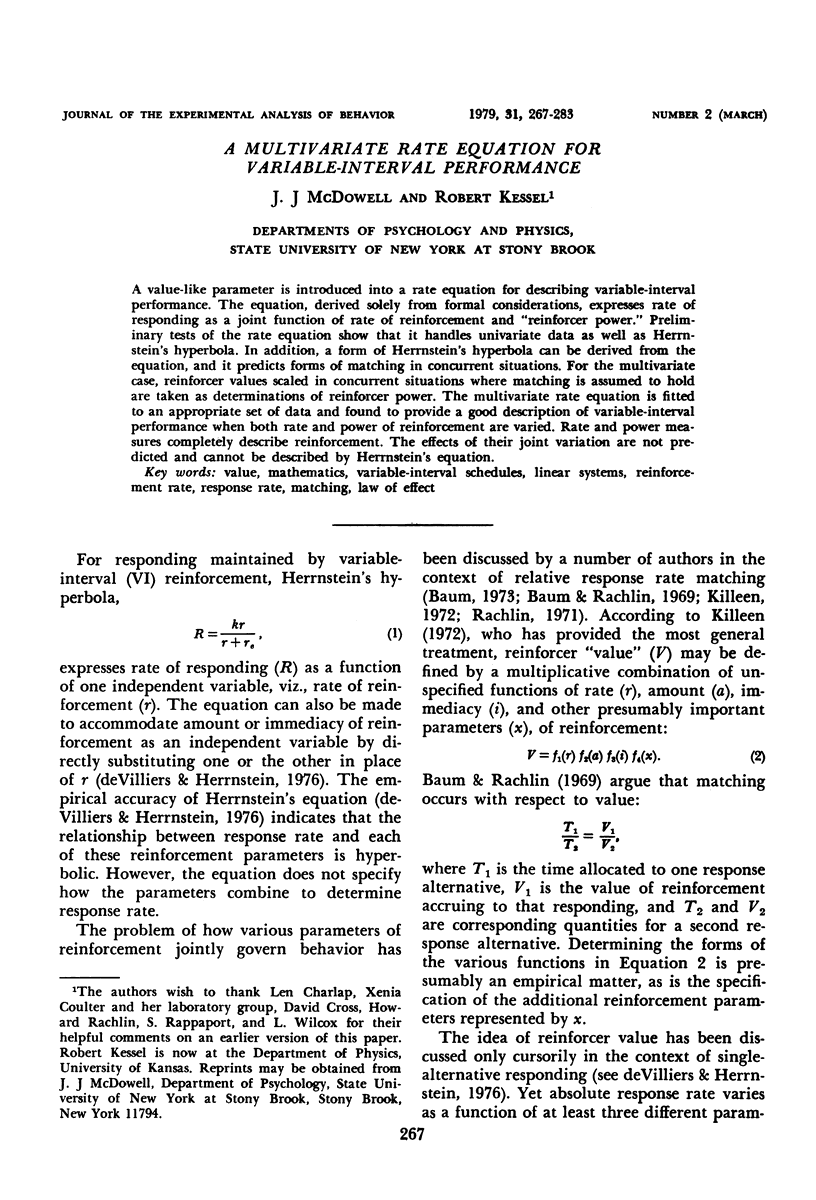
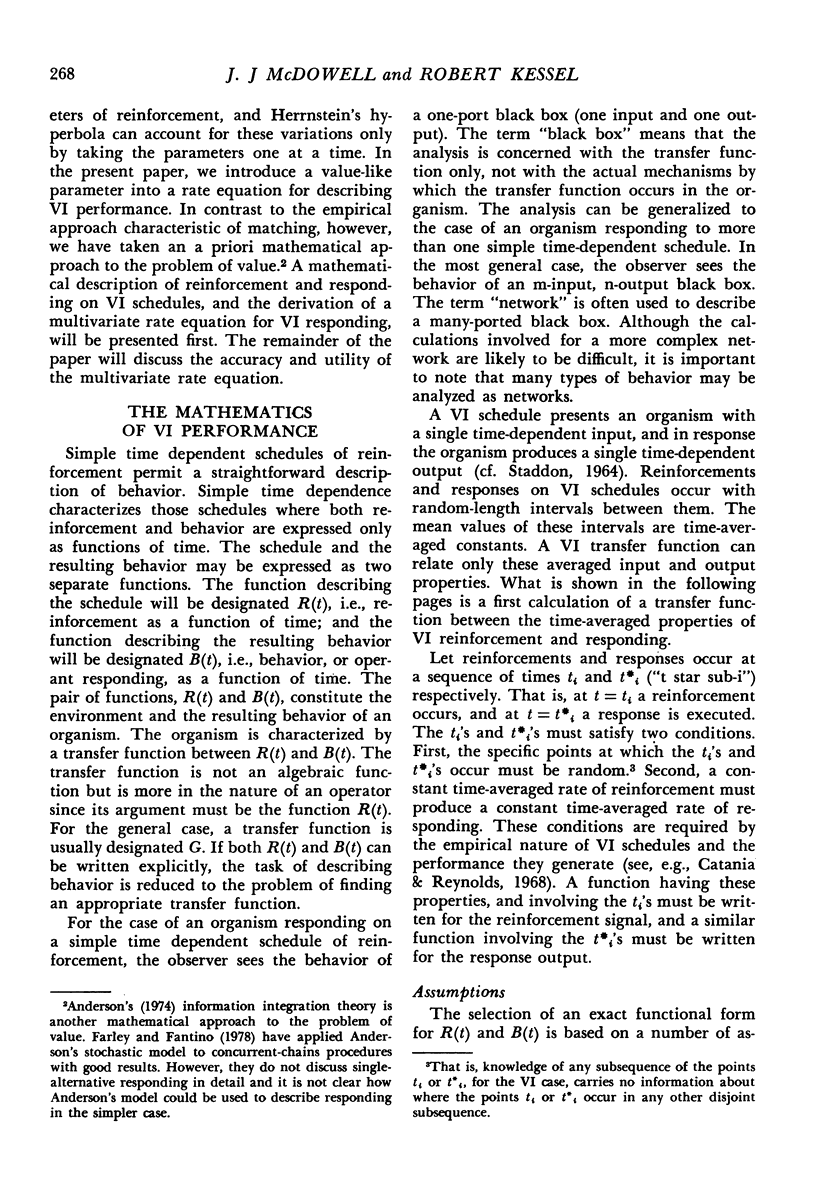
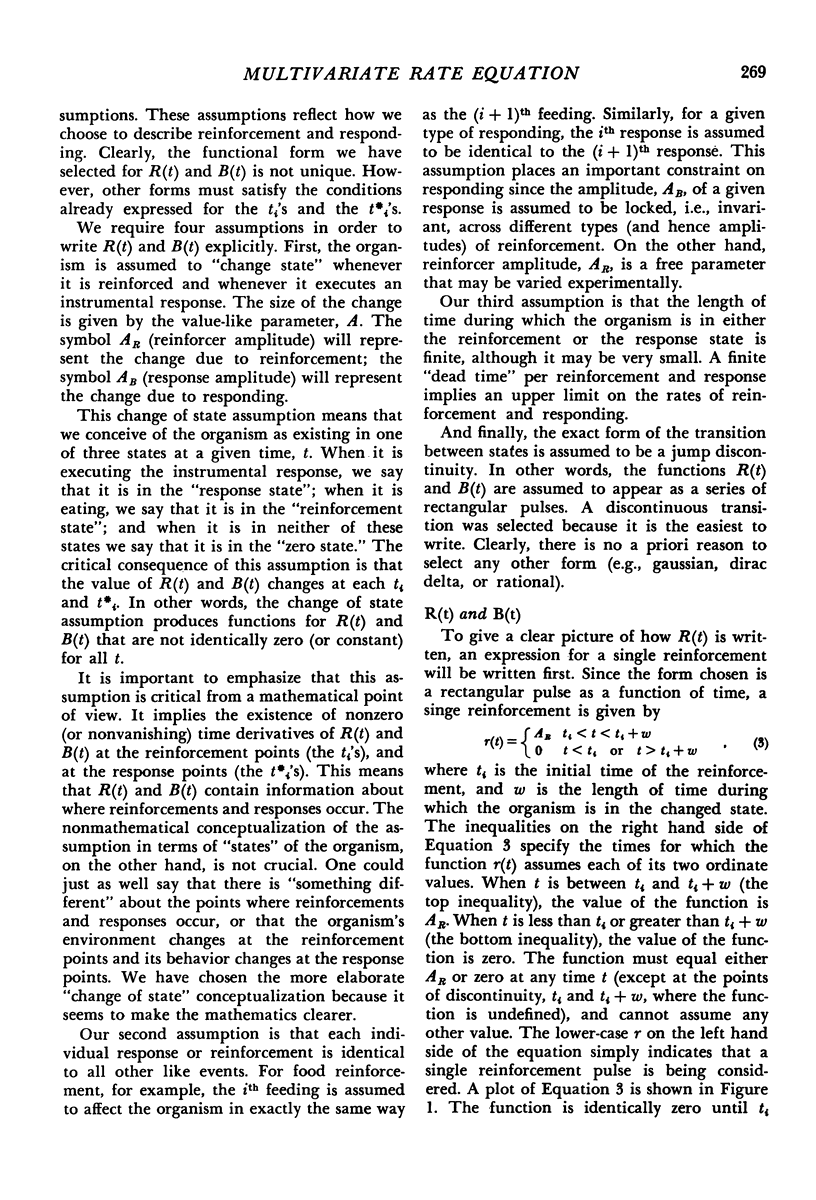
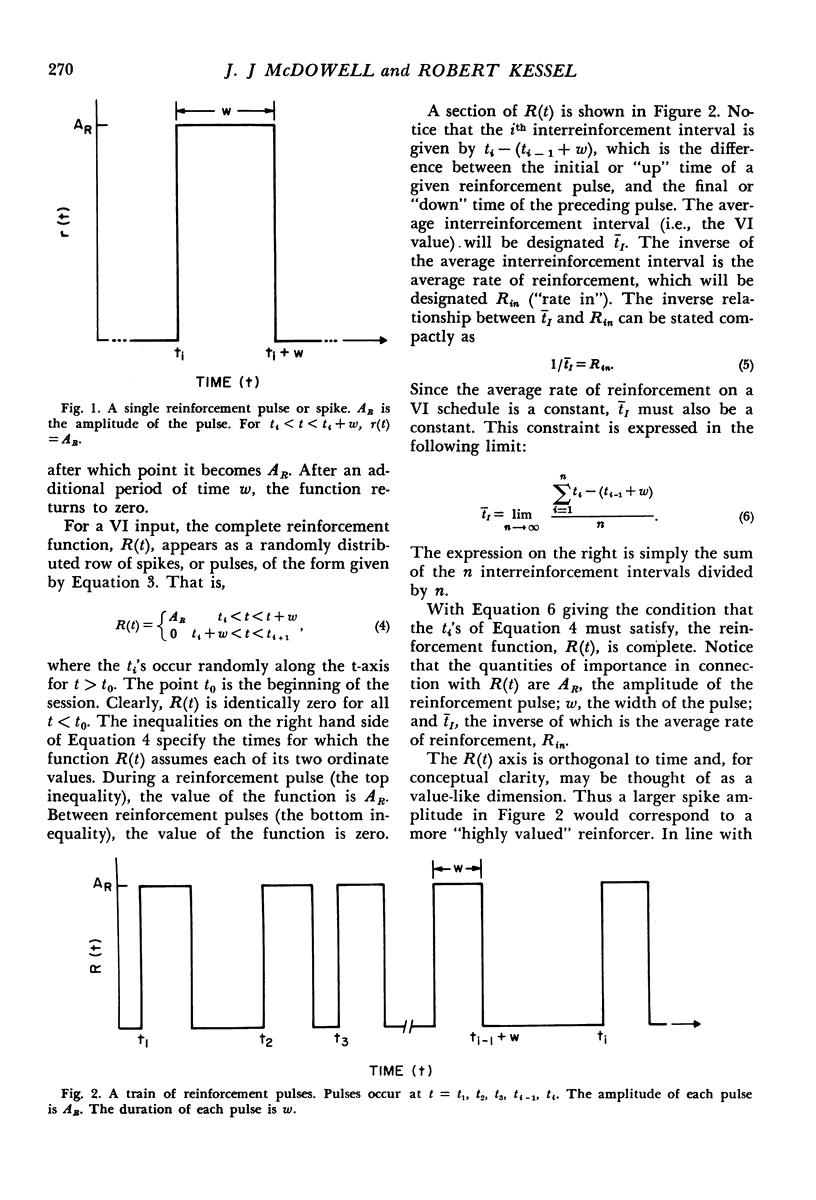
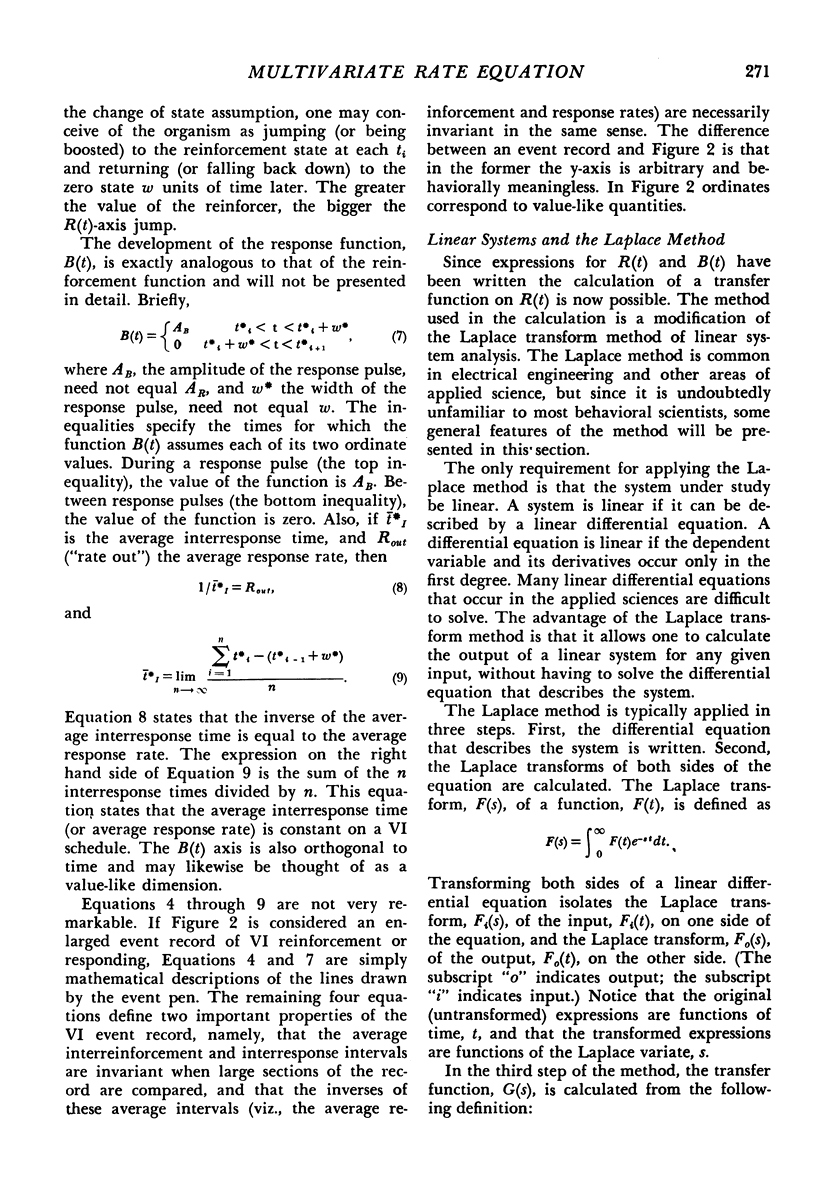
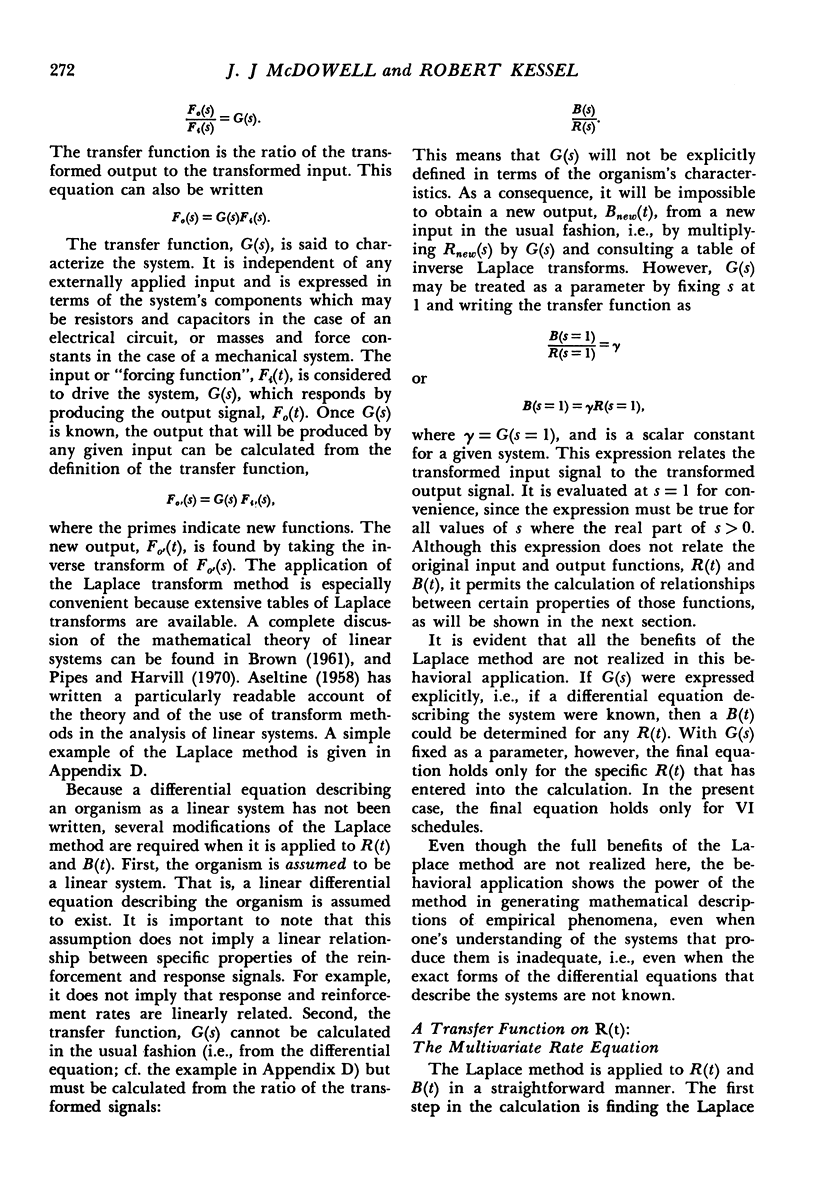
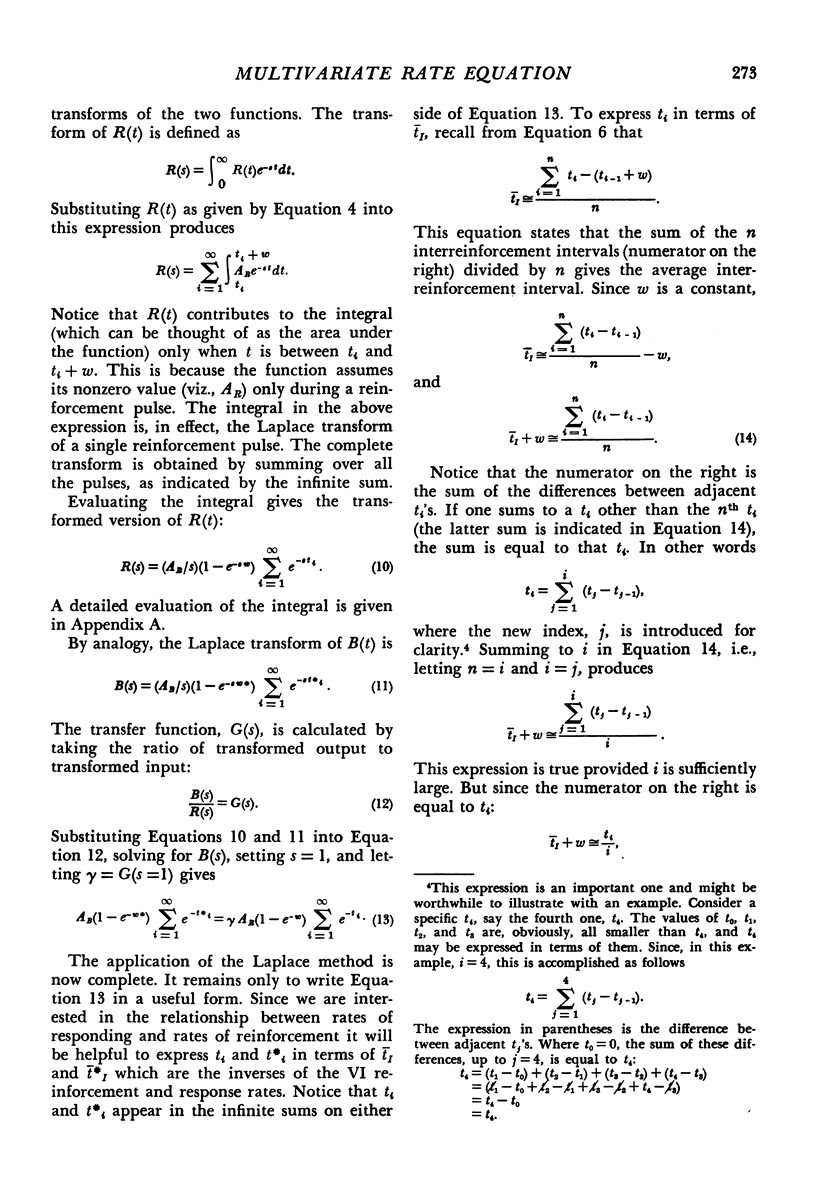
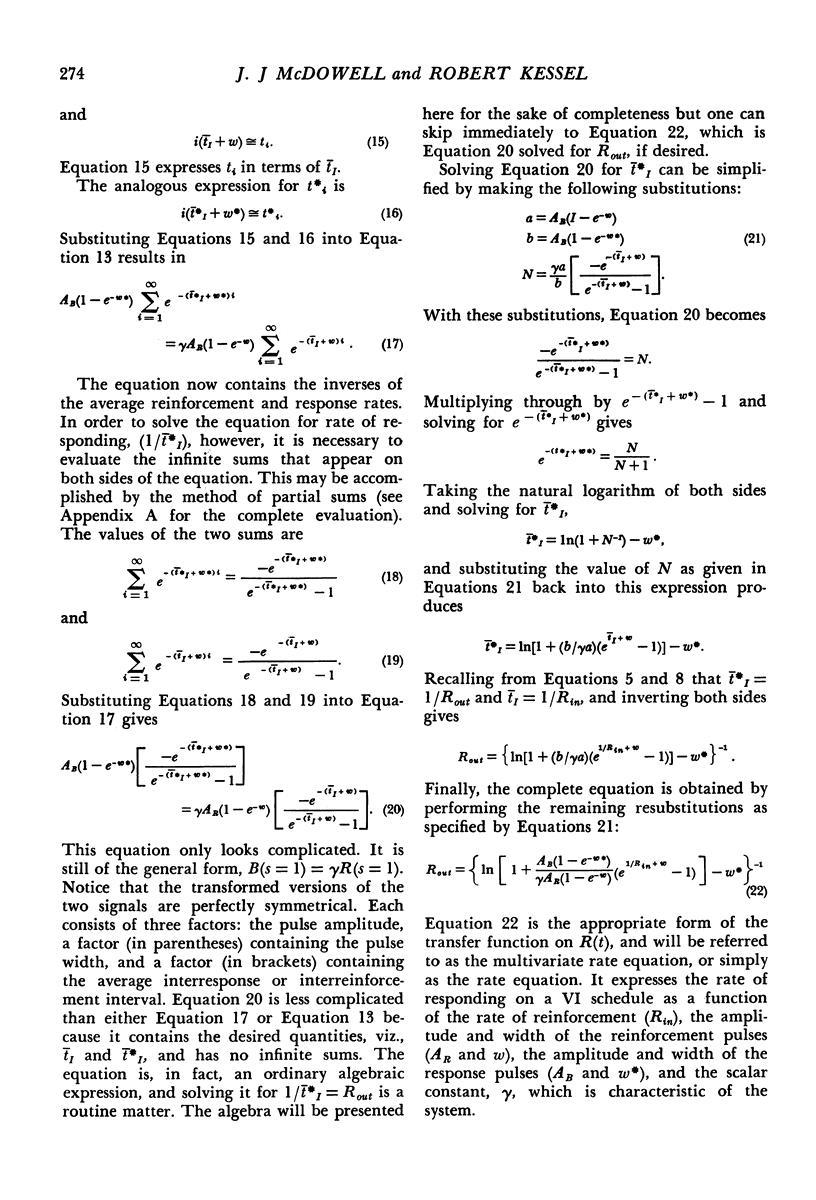
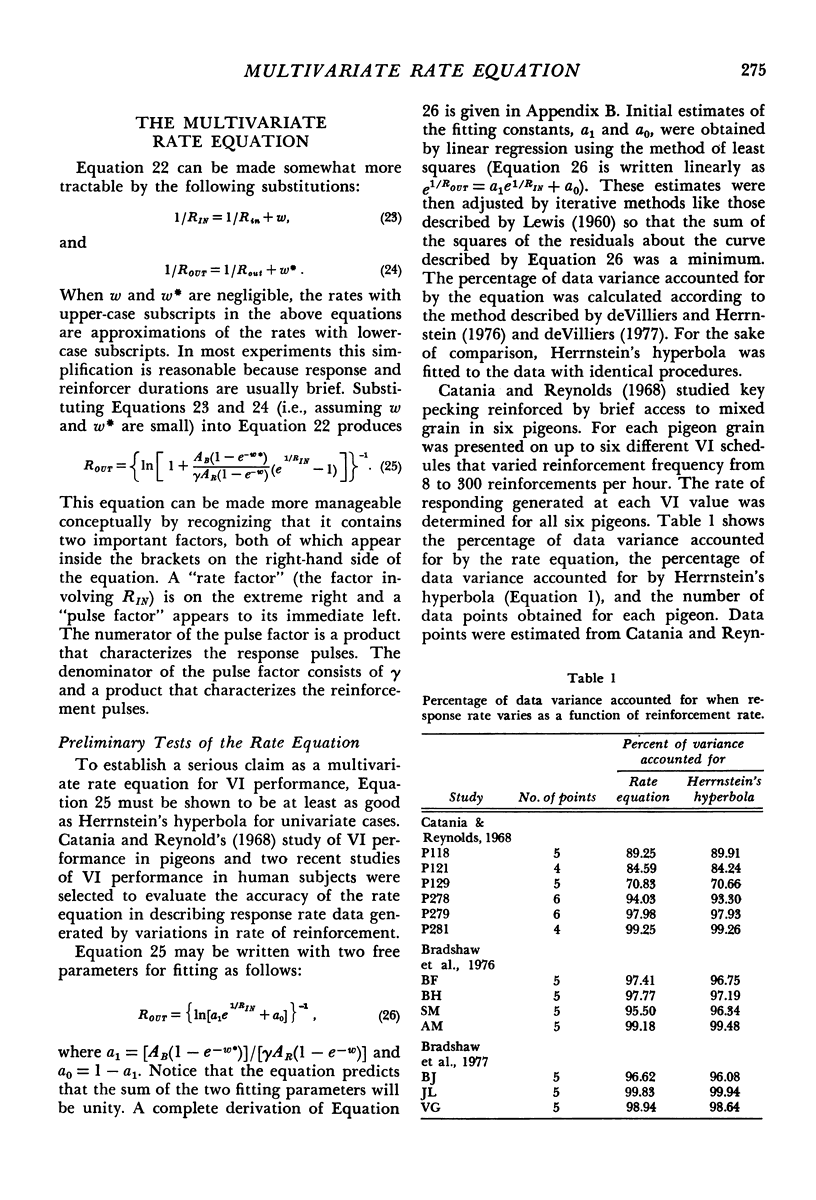
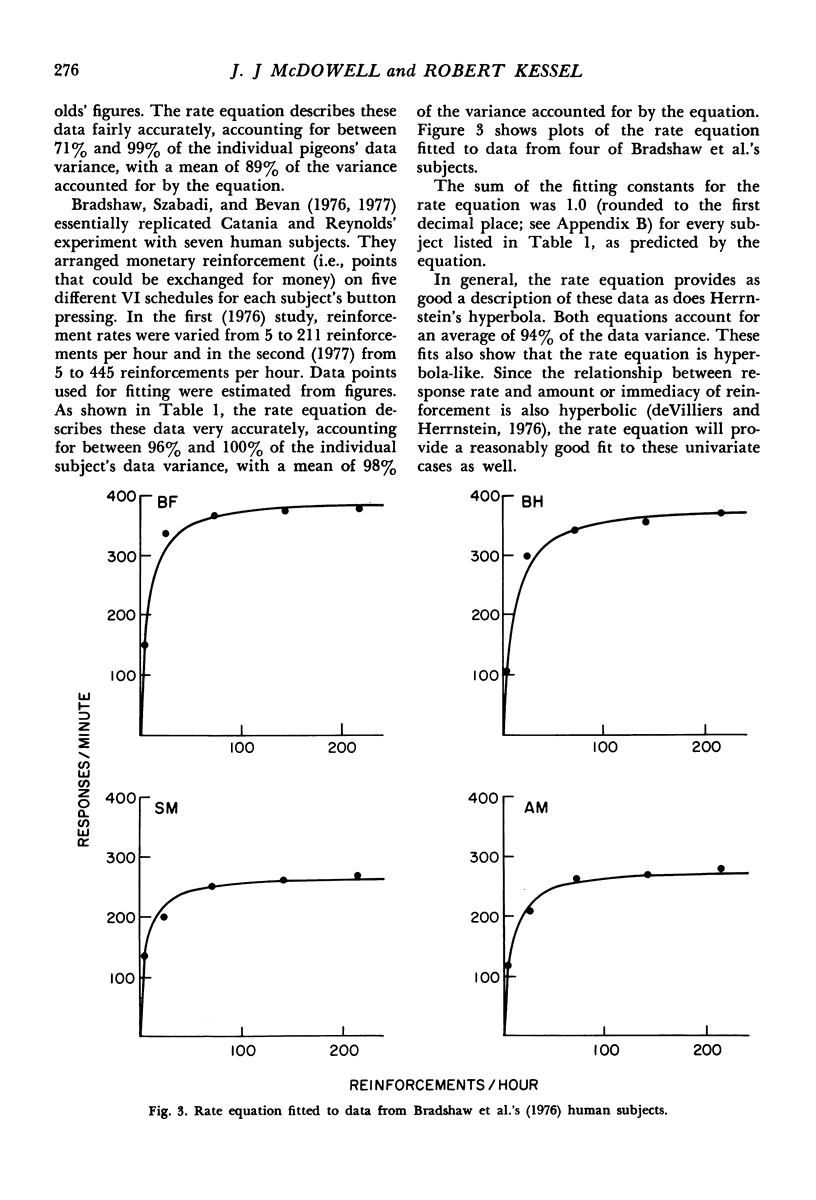
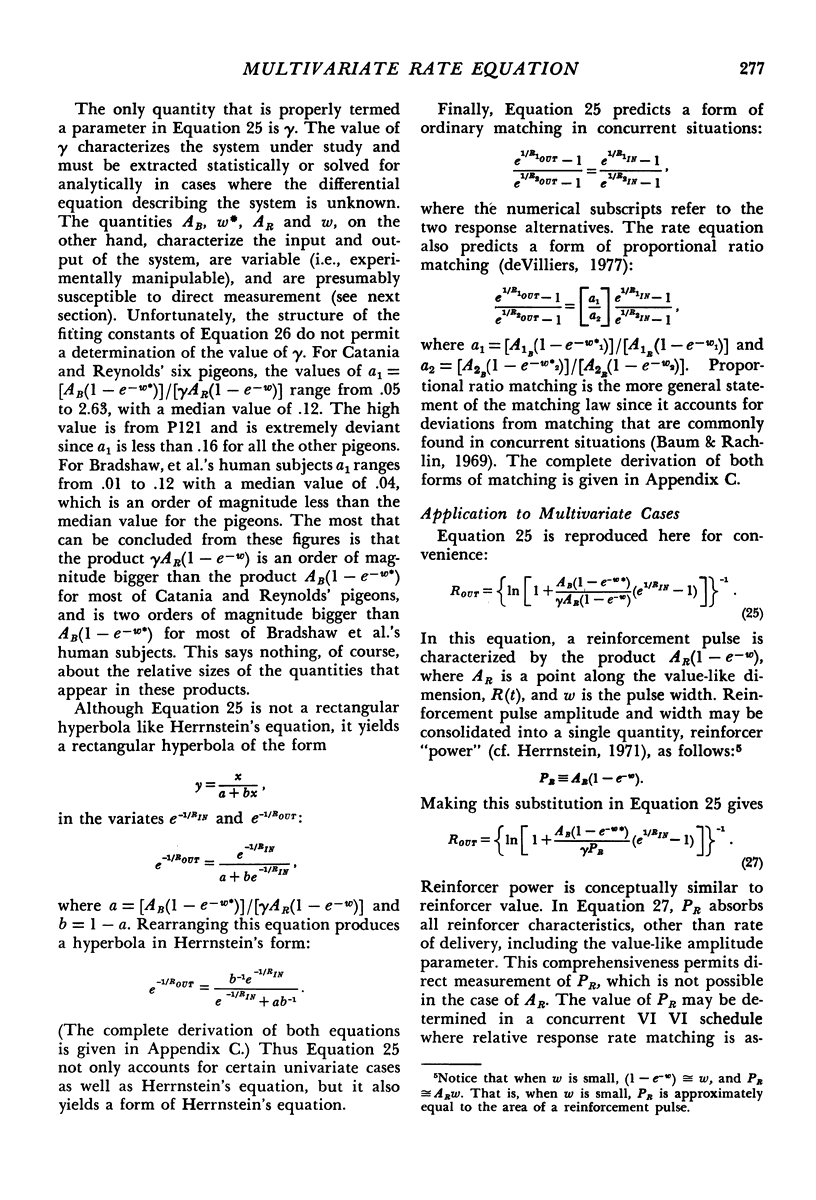
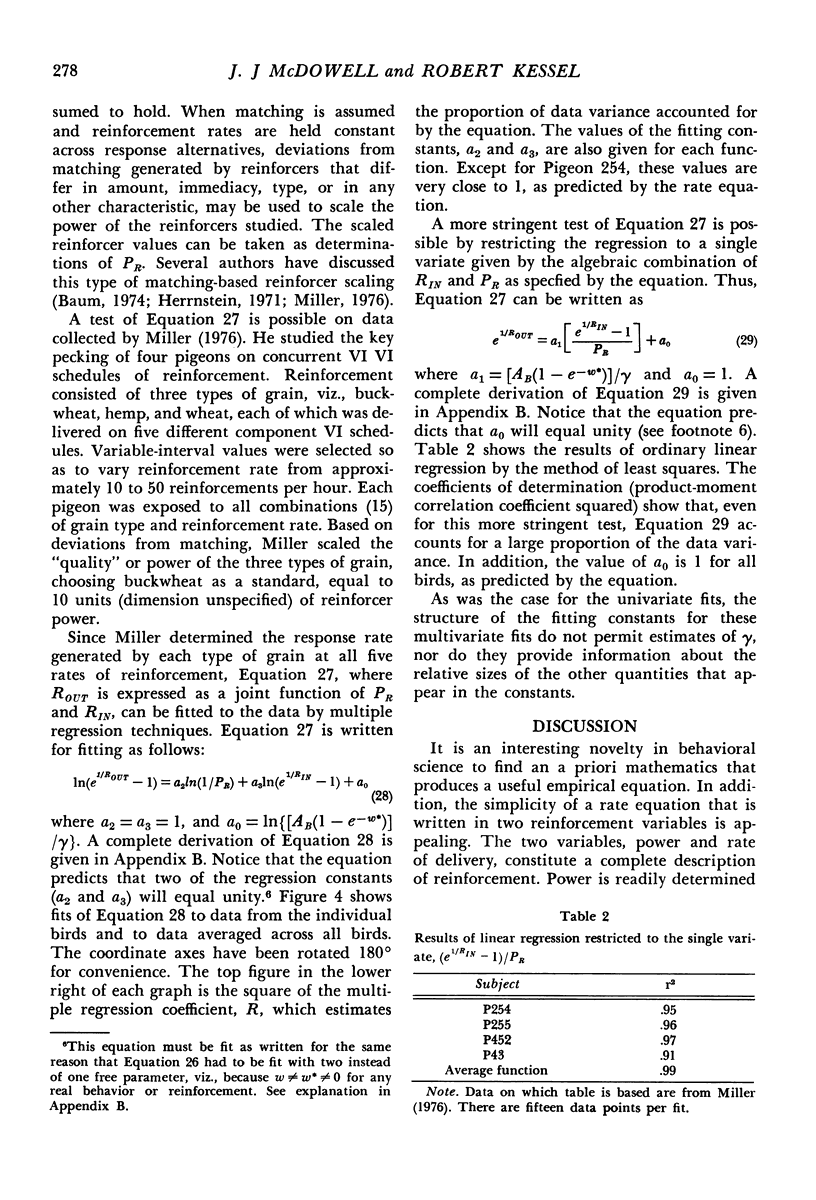
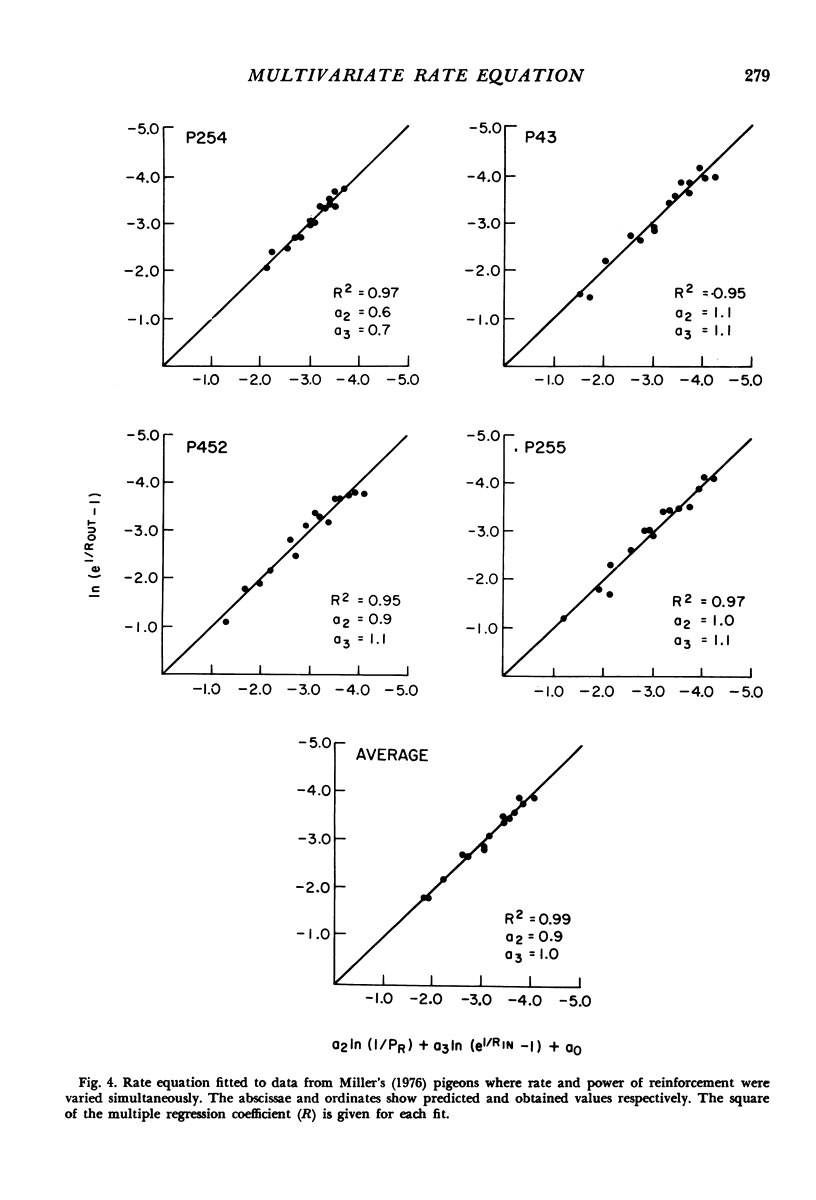
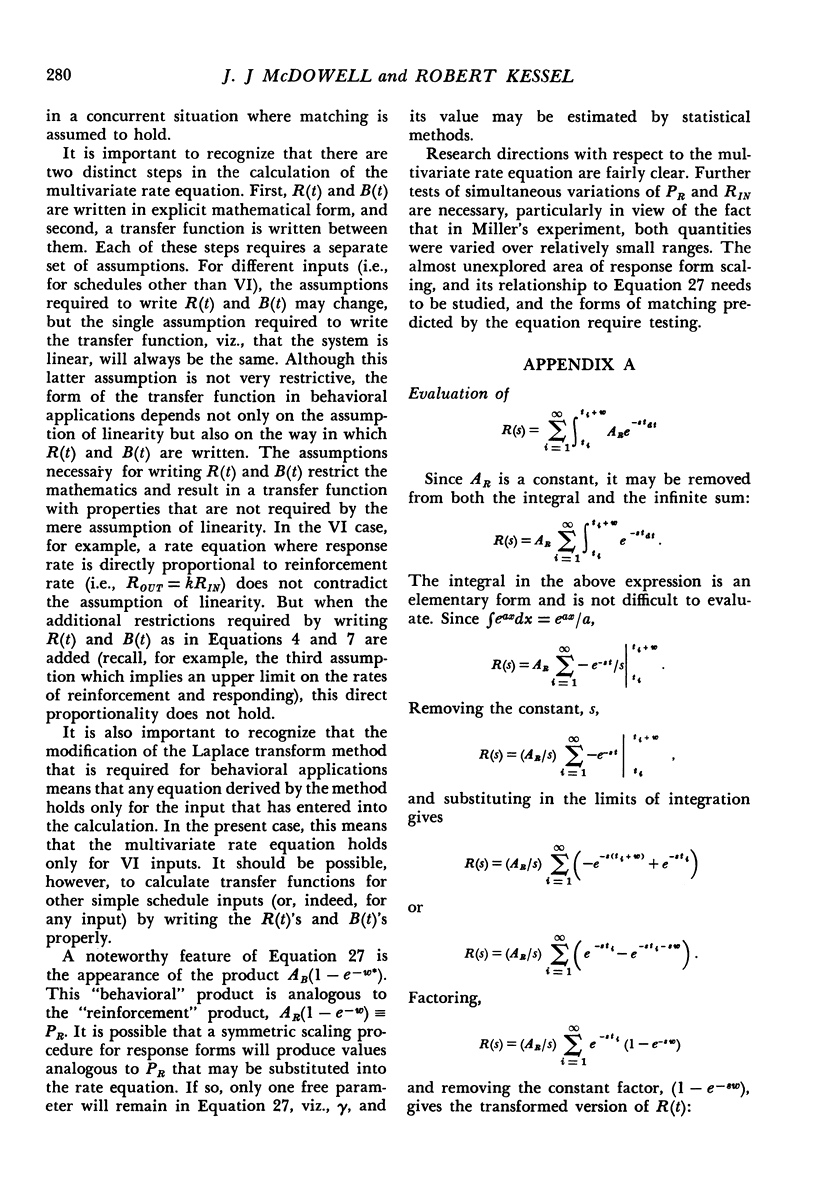
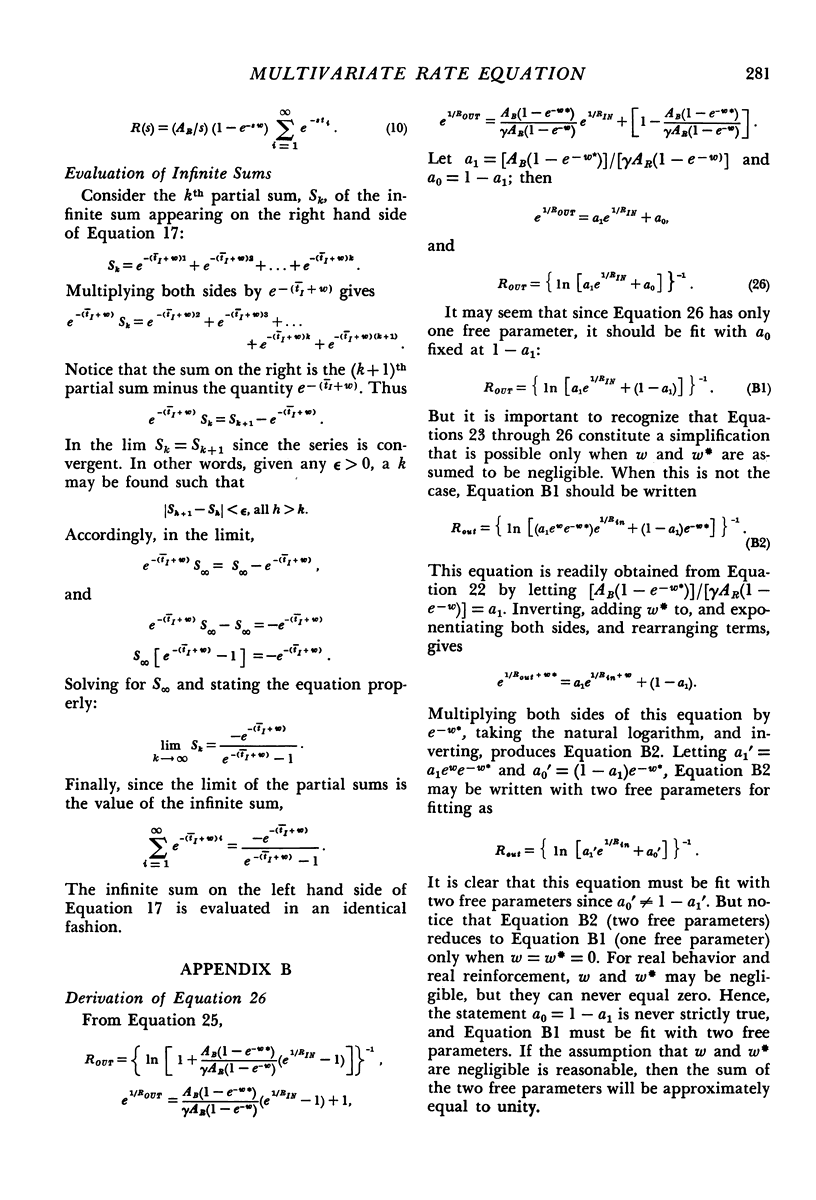
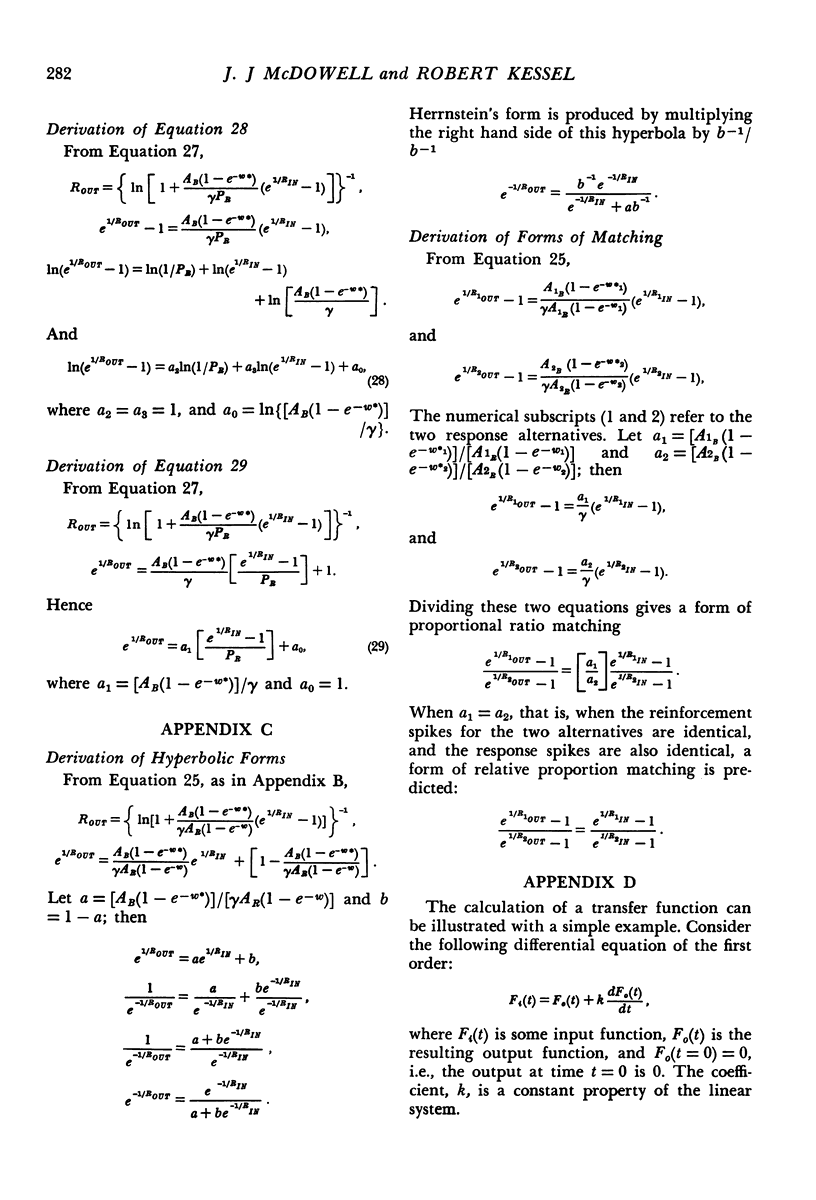
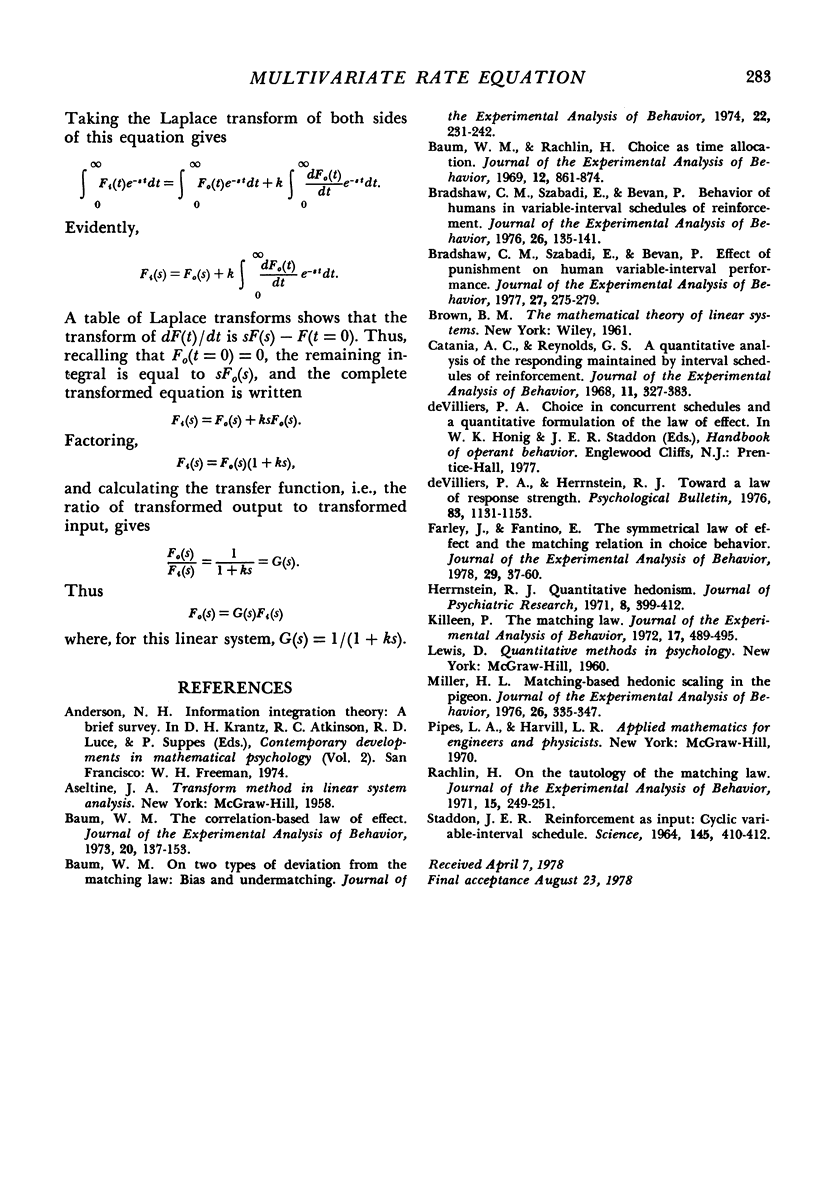
Selected References
These references are in PubMed. This may not be the complete list of references from this article.
- Baum W. M. On two types of deviation from the matching law: bias and undermatching. J Exp Anal Behav. 1974 Jul;22(1):231–242. doi: 10.1901/jeab.1974.22-231. [DOI] [PMC free article] [PubMed] [Google Scholar]
- Baum W. M., Rachlin H. C. Choice as time allocation. J Exp Anal Behav. 1969 Nov;12(6):861–874. doi: 10.1901/jeab.1969.12-861. [DOI] [PMC free article] [PubMed] [Google Scholar]
- Baum W. M. The correlation-based law of effect. J Exp Anal Behav. 1973 Jul;20(1):137–153. doi: 10.1901/jeab.1973.20-137. [DOI] [PMC free article] [PubMed] [Google Scholar]
- Bradshaw C. M., Szabadi E., Bevan P. Behavior of humans in variable-interval schedules of reinforcement. J Exp Anal Behav. 1976 Sep;26(2):135–141. doi: 10.1901/jeab.1976.26-135. [DOI] [PMC free article] [PubMed] [Google Scholar]
- Bradshaw C. M., Szabadi E., Bevan P. Effect of punishment on human variable-interval performance. J Exp Anal Behav. 1977 Mar;27(2):275–279. doi: 10.1901/jeab.1977.27-275. [DOI] [PMC free article] [PubMed] [Google Scholar]
- Catania A. C., Reynolds G. S. A quantitative analysis of the responding maintained by interval schedules of reinforcement. J Exp Anal Behav. 1968 May;11(3 Suppl):327–383. doi: 10.1901/jeab.1968.11-s327. [DOI] [PMC free article] [PubMed] [Google Scholar]
- Farley J., Fantino E. The symmetrical law of effect and the matching relation in choice behavior. J Exp Anal Behav. 1978 Jan;29(1):37–60. doi: 10.1901/jeab.1978.29-37. [DOI] [PMC free article] [PubMed] [Google Scholar]
- Herrnstein R. J. Quantitative hedonism. J Psychiatr Res. 1971 Aug;8(3):399–412. doi: 10.1016/0022-3956(71)90033-1. [DOI] [PubMed] [Google Scholar]
- Killeen P. The matching law. J Exp Anal Behav. 1972 May;17(3):489–495. doi: 10.1901/jeab.1972.17-489. [DOI] [PMC free article] [PubMed] [Google Scholar]
- Miller H. L. Matching-based hedonic scaling in the pigeon. J Exp Anal Behav. 1976 Nov;26(3):335–347. doi: 10.1901/jeab.1976.26-335. [DOI] [PMC free article] [PubMed] [Google Scholar]
- Rachlin H. On the tautology of the matching law. J Exp Anal Behav. 1971 Mar;15(2):249–251. doi: 10.1901/jeab.1971.15-249. [DOI] [PMC free article] [PubMed] [Google Scholar]
- STADDON J. E. REINFORCEMENT AS INPUT: CYCLIC VARIABLE-INTERVAL SCHEDULE. Science. 1964 Jul 24;145(3630):410–412. doi: 10.1126/science.145.3630.410. [DOI] [PubMed] [Google Scholar]


